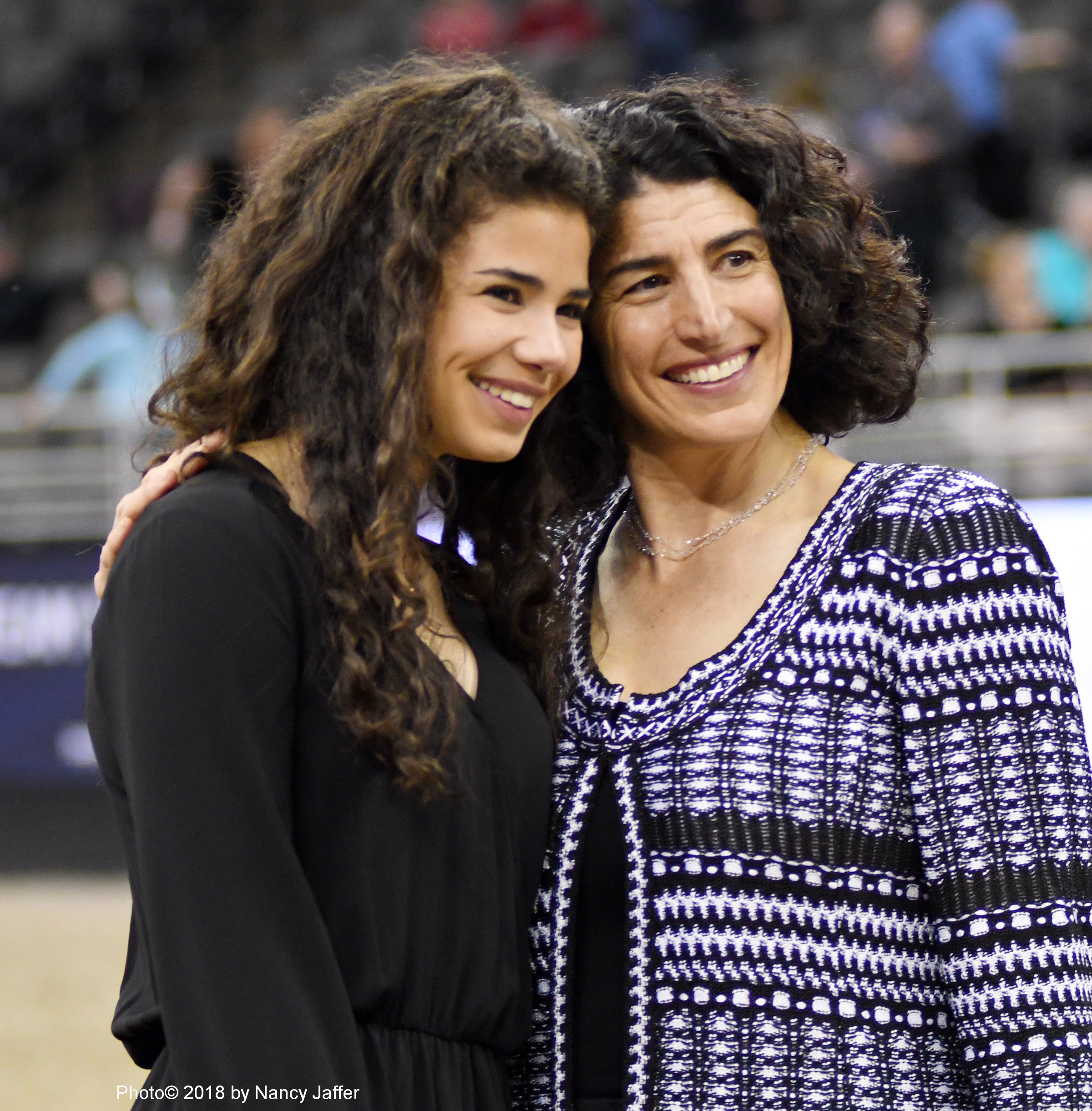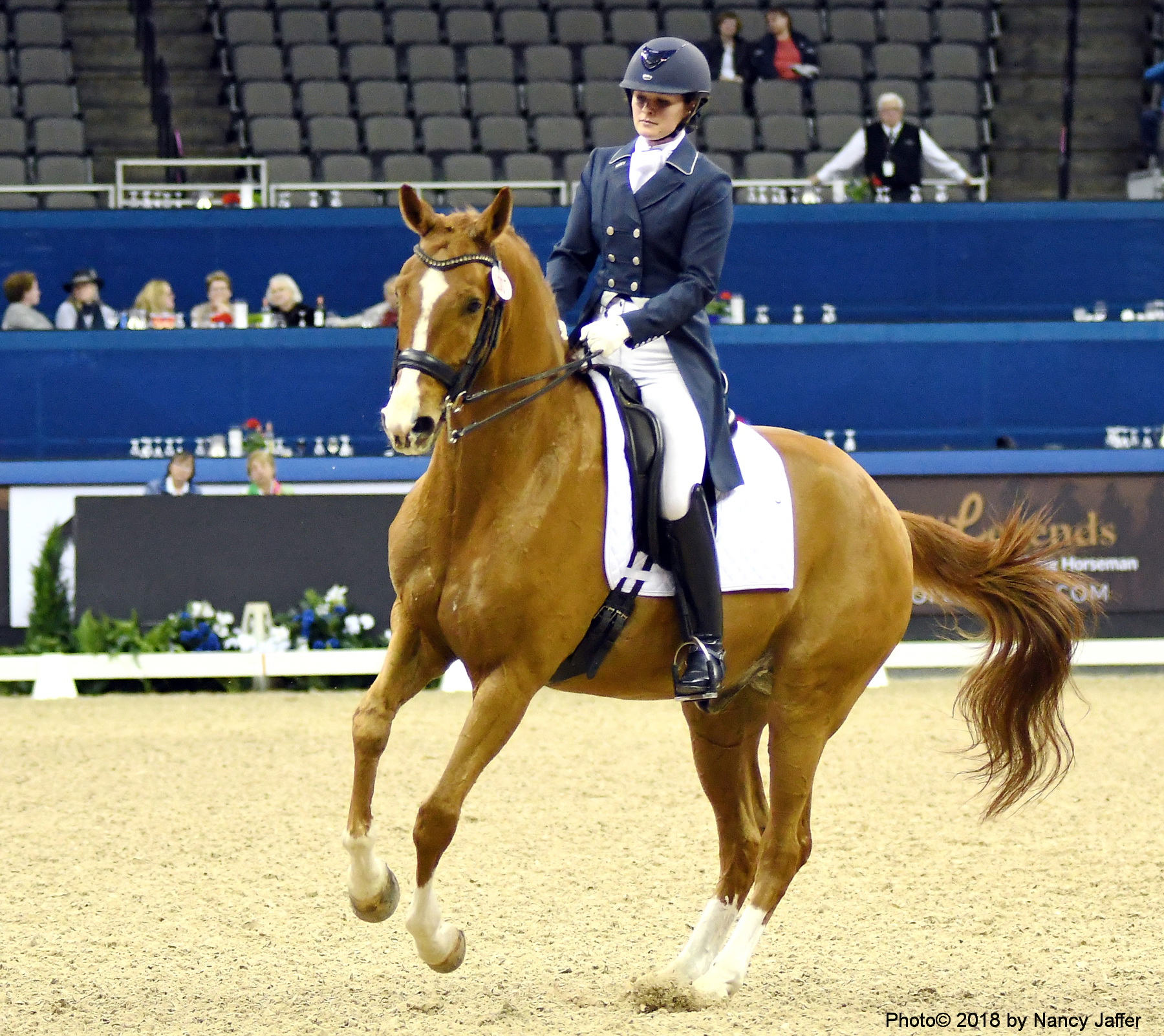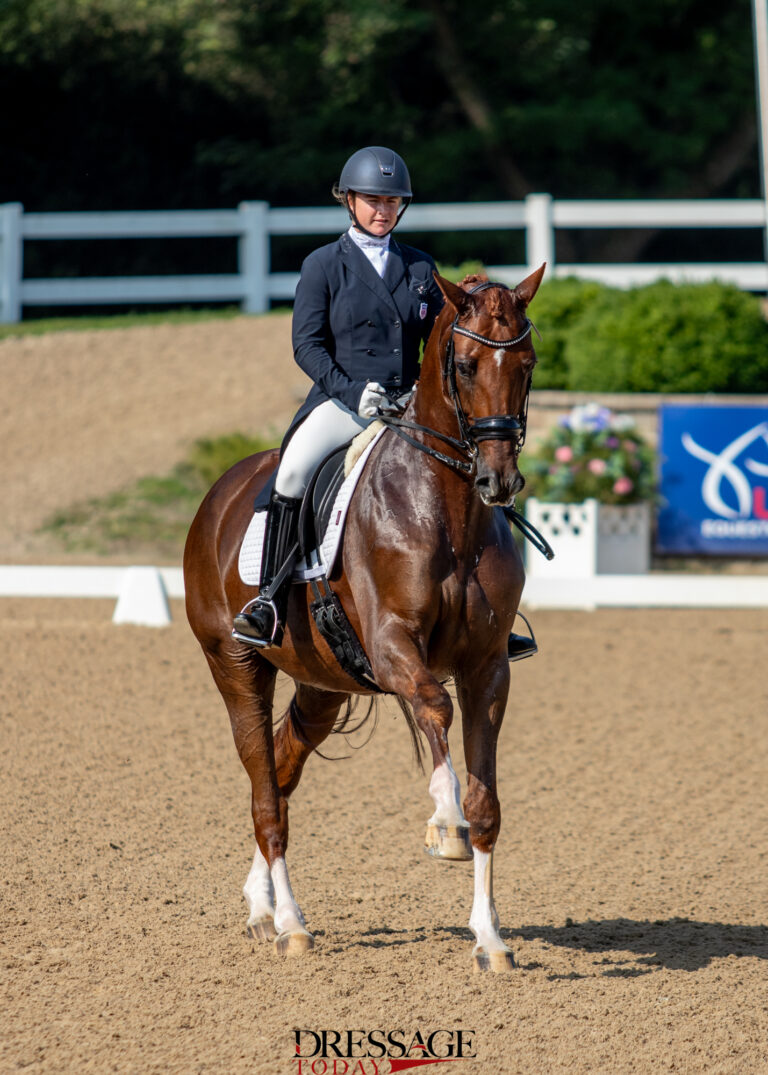The 2017 FEI World Cup Dressage Final was a tough act to follow for organizers of the International Omaha show. What can you do after Isabell Werth and Laura Graves have left the building?
The International Omaha, which started as an all-jumper show presented by the Omaha Equestrian Foundation, was designed to put Midwestern competitors on the map and develop equestrian competition in the region as well. The show had its biggest moment presenting the dressage and Longines Show Jumping FEI World Cup Finals last year. When Omaha, Nebraska, was first announced as the location of the finals, there was rampant skepticism here and abroad—many Europeans had no idea where Omaha was.
The success of the finals made believers out of skeptics, but the World Cup won’t return to Nebraska in the foreseeable future. So for the 2018 edition of the International, April 12–15, at the CenturyLink Center, the competition had to go a different route. The objective was still the same—to strengthen dressage in the Midwest and provide a learning experience for competitors and spectators alike. While big-name international Grand Prix riders were not available this time around, there were plenty of others eager for a chance to ride in the arena where the stars of the sport had been showcased 12 months before.
This year’s approach was two-pronged. First, Small Tour riders were combined into teams with Amateurs and Juniors, each competing at their own level on Thursday, the first day of competition. The climax for everyone taking part was the freestyle, performed on Saturday night.
That evening traditionally had been reserved for the show jumping Grand Prix, but the $130,000 feature for that discipline was moved to Sunday so dressage could enjoy a special spotlight. The concept brought public attention to dressage at a show that began including it only in 2015. The hope was that perhaps some of those watching would want to get involved and try the sport themselves.
The other angle involved providing a top-notch clinician, German Olympic and World Equestrian Games gold medalist Hubertus Schmidt, to work in front of an audience with equine participants who had quite a range of experience—from First Level up to a horse who was just starting Grand Prix.
Lisa Roskens, chairman and founder of the Omaha Equestrian Foundation, observed that Schmidt’s presence was exciting. “People in our area, regardless of discipline, are hungry for knowledge and it was a privilege to give them the opportunity to learn from someone of Hubertus’ caliber,” she said. “It is not often that you find someone who is a top rider and also a great teacher. Hubertus is both—he knows what needs to be done to improve a horse and he has a very clear, but kind way of communicating with riders. I even saw jumper riders watching and taking notes for their flatwork.”

Missy Fladland, who rode the 5-year-old I’m All In to start off the clinic, said her work with Schmidt reassured her that she and her regular trainer, Katherine Bateson Chandler, are “on target” with the work they have been doing with the Dutch Warmblood, who is schooling First Level. “Proper training is proper training,” said Fladland, who is based in Iowa.
During her session, Schmidt talked about the stretch and making sure the poll is really loose and the horse is soft over his back before adding any power to the trot. “Once we get that looseness, we start to build the power and start to ask for a bit more collection,” Fladland said.
Schmidt mentioned that on a horse’s stiff side sometimes it’s good to overbend to get it more supple as part of the training program. Fladland cited his advice to not work too long, especially with a young horse, and to make sure that Indy, as he is known in the barn, got time on the trails and exposure to something besides the arena.
Fladland is a long-time admirer of Schmidt, particularly remembering a display of skill she saw at Aachen a few years ago, when he finessed a young stallion he was riding. “Having someone like Hubertus come to Omaha shows how much this area has grown and is continuing to grow in the sport,” said Fladland. “Any time we can get any top professional into our area in the Midwest, and not just the big areas on the East or West coasts, it shows how much our area is committed to bringing the sport to the top and how much interest and desire we have to get there.”

(Credit: Nancy Jaffer)
With Allison Nimmo, of Colorado, who rode the Oldenburg Finley PCH, a horse she is preparing for the FEI 6-Year-Old Test, Schmidt suggested starting with shoulder-fore rather than shoulder-in as the way to go at this level. He mentioned that the half pass is “the best movement to make the trot better.”
Finding the right time to begin flying changes, he said, happens when a horse can do a good transition to the canter in a straight line. When there is difficulty in the counter canter, a way to deal with it is just to proceed on the short side of the arena. He suggested going on a circle to work on the transition to the walk.
Heidi Basler, who is schooling Grand Prix with the Zweibrucker Le Mode, is a native of Lincoln, Nebraska. Basler now lives in Florida but came home for the show. Schmidt asked her to go from a medium walk to a collected walk and then to an uphill trot. He mentioned that it takes “two or three years to make a good piaffe,” while pointing out a piaffe pirouette is a way to get the horse “more swinging and more sitting.” He also noted it is important to focus on the point where you want to go to get a flying change.
Kansas trainer Emily Miles was aboard the Oldenburg Floretienne (E.T.) for her time with Schmidt. The 9-year-old, with whom she has worked from Training Level, is a developing Grand Prix horse with little indoor mileage. That made his presence at CenturyLink a real learning experience first and foremost. “It was an awesome indoor venue with people very close to the ring,” she explained. Schmidt has been Miles’ idol since she was a child, so riding for him was particularly memorable. She picked up some useful hints. “Using the turning in the piaffe to help keep [E.T.] active and rhythmical and encourage him to stay more on the spot was a great tool,” Miles said about her ride.

Of Schmidt, who praised her training, she said, “He’s very quiet and calm; I like his style. The fact that he was so complimentary meant the world to me. It’s an opportunity I was very thankful for.”
Schmidt said that he does similar clinics in Germany once or twice a year. “They call them ‘old master’ clinics,” he commented, noting that former U.S. coach Klaus Balkenhol also does some. “For the [spectators], it’s often very good. It’s not a perfect thing; they are seeing mistakes where you can work on horses,” he said.
In addition to riding in the clinic with Schmidt, Fladland, Miles and Basler were all part of the team competition, a feature that made an impression on Lilo Fore, who was an FEI five-star judge before aging out two years ago but who still remains active in the discipline. “It’s interesting to see the different levels within one team. Every one of the riders is trying to work on their team and make it a success,” she said. “Some of them have a little bit of a hard time with the atmosphere. That happens. Horses have to get used to these things. I believe most of the riders we saw tried very hard to show very correct training with basics…a lot of very nice movements, very well-presented. It was very appreciated from all of us,” she said, speaking for herself and the other judges. “I think this competition could be one of the nicest in this country, so go on with it,” Fore advised.
For many of the team riders, participating in the show was a highlight of their competitive lives thus far. “It is an immense privilege to be able to ride in such an atmosphere, knowing it’s also such a special arena, because last year we had the World Cup,” said Camille Carier Bergeron, who traveled to the show from her home in Quebec, Canada. “It’s incredible to think that Isabell Werth and Carl Hester and the big riders I dream to become were here,” said Bergeron, whose horse Sound of Silence is in his first year of competition. She was eager to give him the experience of competing indoors, in a facility she compared to what she would encounter in Europe. “It’s very inspiring,” she commented.

Fladland, who won the freestyle with Sundance 8, observed that the dressage contingent included riders who had lived in the area and returned “to support and build the show.” Speaking of the team competition, which in 2019 will include Para-Dressage riders, she reported, “We all had a blast. I think it will grow; it will grow fast. It builds a lot of camaraderie. We really had a big time doing it and are looking forward to doing it again next year.”
Find More on DTO
You can enjoy Part 1 of DTO’s Hubertus Schmidt video series for free at DressageTodayOnline.com/hubertus. In this segment, Schmidt presents a fantastic opportunity to witness the foundation of his training, including the importance of stretching, relaxation and swing. Schmidt has a spectacular 5-year-old and rider warm up with a stretchy, relaxed trot, progressing to balanced transitions in and out of the canter. To watch Part 1 in this series and other great training videos, DTO is offering a free month at DressageTodayOnline.com/30free to all Dressage Today readers.











